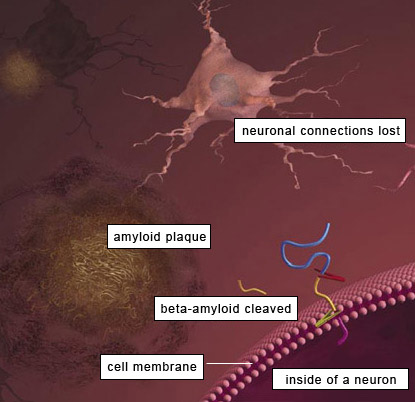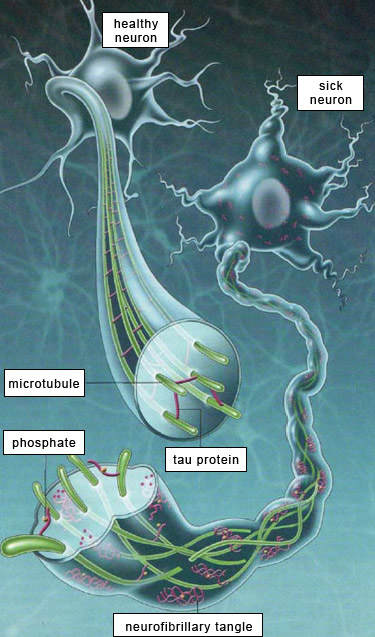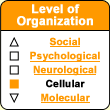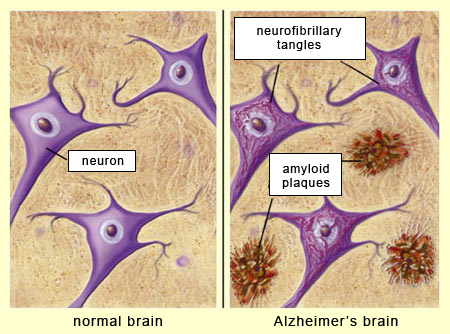|
|
|
|
| AMYLOID PLAQUES AND NEUROFIBRILLARY TANGLES |
|
What is commonly called Alzheimer’s is a form of dementia that is accompanied by a gradual decline in a number of cognitive functions. Alzheimer’s is generally associated with two types of lesions throughout the cerebral cortex:
amyloid plaques, which are found between the neurons, and neurofibrillary tangles, which are found inside them.
Both amyloid plaques and neurofibrillary tangles are buildups of protein that also occur as part of the normal aging process, but in people with Alzheimer’s-type dementias, the amounts of these proteins that build up are far greater.
 |
Amyloid plaques, also know as senile plaques, were the first of these two types of lesions to be described. They consist of small, dense deposits of a particular protein, beta-amyloid.
Beta-amyloid molecules are chemically adhesive, so that they gradually stick to one another to form plaques.
Beta-amyloid
is derived from a larger protein molecule present in the membrane surrounding healthy nerve cells. |
Many researchers (but not all) believe that beta-amyloid protein may become toxic for these nerve cells when it reaches high concentrations in the plaques.
Neurofibrillary tangles are also due to a protein that becomes abnormal, but occur inside the neurons rather than outside. To understand how neurofibrillary tangles occur, you must first understand something about nerve-cell anatomy.
Neurons have a system of specialized filaments called microtubules that transport nutrients, organelles, and other essential materials from the cell body to the tip of the axon.
These microtubules are somewhat like a pair of rails on a railroad, and the protein that acts as the ties that hold these rails together and keep them parallel is called the tau protein.
In people with Alzheimer’s, the tau protein molecules disaggregate into filaments
that form tangles. Thus the “rails” lose their “ties” and can no longer stay straight and properly transport the materials essential to the neuron’s survival.
The nerve endings at the very tip of the axon are the first to degenerate as a result of this lack of sustenance. As a result, communication with the following neurons in the circuit is reduced and, once the entire neuron has degenerated, cut off completely. |

Credit: Delphine Bailly, NEUR-ONES |
|
|







